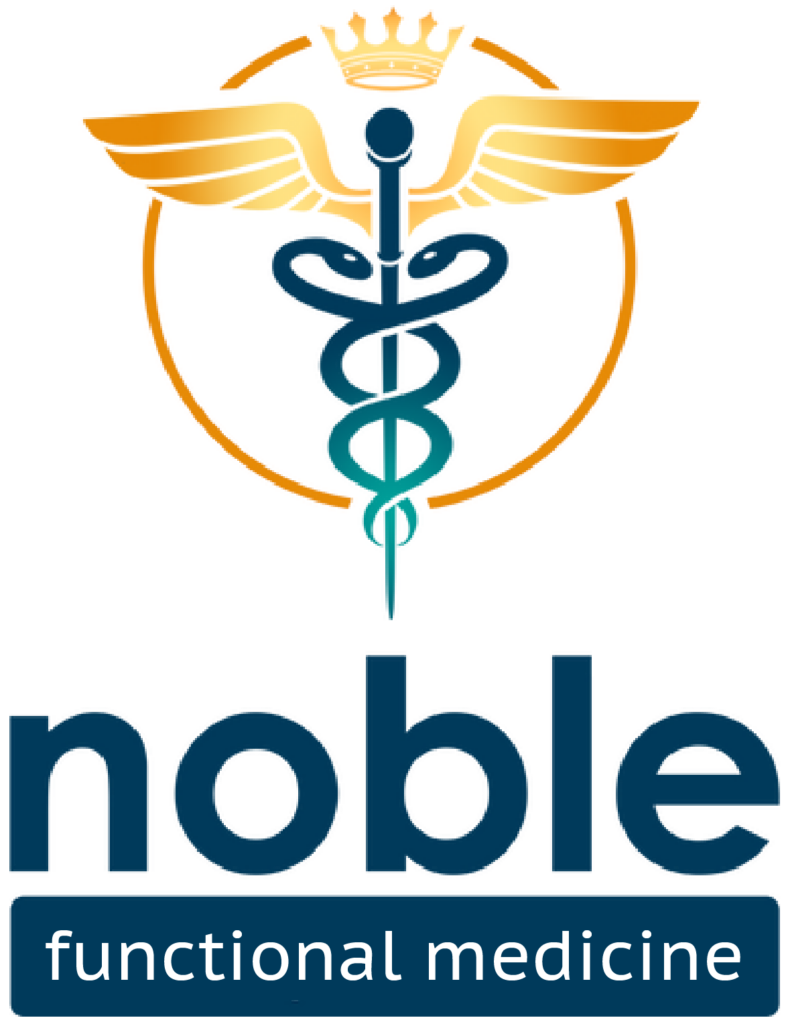As women go through life, we go through many hormonal changes. One of the biggest changes our bodies go through is menopause. While menopause gets a lot of attention, what about the period of time leading up to it?
This time is called perimenopause. This is a period of time leading up to menopause where the ovaries decrease their production of two key hormones: estrogen and progesterone.
The hormonal changes you experience during perimenopause can cause many unpleasant symptoms that may affect your quality of life. And as you transition into menopause, the hormonal changes increase, and these symptoms can get worse.
Many women wait until they’re completely in menopause and have severe symptoms to get help. But the best time to plan and be ready for menopause is during perimenopause.
Fortunately, perimenopause treatment is available. And getting the right treatment involves working with a healthcare provider that understands the complexity of this process and how it specifically affects your body.
So let’s dive into it!
Perimenopause: The Transition to Menopause
Perimenopause is the transitional time leading up to menopause. It’s a completely natural process, and it signifies the end of reproductive years. The average age for perimenopause is when women enter their 40s, but this can vary.
Perimenopause may last several years. During this time, there are big changes in several hormones – especially estrogen and progesterone.
The signs of perimenopause may be subtle. But by understanding the early signs of perimenopause, you’ll be able to take proactive steps to prepare for the eventual transition to menopause.
The Phases of Perimenopause
Perimenopause is divided into four phases. Each phase is marked by different changes in your menstrual cycle and hormone levels.
Phase 1: Early Perimenopause
During the first phase, your menstrual cycles are still regular. But you may notice small changes in flow or the length of your period.
Hormonal fluctuations start during this phase, but symptoms are usually mild or not present.
Phase 2: Irregular Periods
The second phase is when you’ll start to have irregular menstrual periods. Changes in your menstrual cycle may look like heavier periods or having periods closer together.
During this phase, progesterone levels start to decline.
Phase 3: Increased Length Between Periods
As you enter phase three, the time between each of your periods becomes longer and longer. Most women have menstrual cycles that are up to 60 days apart.
Hormone levels greatly change during this phase – especially estrogen.
Phase 4: Menopausal Transition
The final phase, or late perimenopause, is the menopause transition. Once you’ve gone a full year without a period, you’ve officially reached menopause!
Hormonal Changes During Perimenopause
The hormonal changes of perimenopause involve two hormones: progesterone and estrogen. These hormones are made by the ovaries and are responsible for female characteristics and the ability to reproduce.
Additionally, other hormones like thyroid hormones and stress hormones also fluctuate during perimenopause. Changes in all of these hormones are the reason for perimenopause symptoms.
Progesterone
During perimenopause, progesterone is usually the first hormone to go. This is because progesterone is only made after ovulation. So as ovulation declines, progesterone levels do too. Ovulation typically slows during your 30s and 40s.
Progesterone is responsible for thinning the lining of the uterus so your periods aren’t as heavy or painful. So when progesterone levels drop, you may experience heavier, more painful periods.
Progesterone also produces a hormone called allopregnanolone which helps to calm the brain. So as progesterone levels decrease, you may notice difficulty sleeping, anxiety, and a tough time handling stress.
Other important functions of progesterone include:
- Keeping a healthy immune system
- Reducing inflammation
- Promoting healthy bone density
- Protecting heart health
- Maintaining metabolism
As progesterone levels continue to drop, other symptoms may occur such as:
- Joint pain
- Palpitations
- Migraines – especially right before or after your period
- Heavy or painful periods
- Hives or new rashes or allergies
- Chronic inflammation
- Frequent infections
- Autoimmune diseases such as Hashimoto’s Disease
Estrogen
In addition to progesterone, estrogen levels also significantly change during perimenopause – specifically the later stages.
In the first phases of perimenopause, we see symptoms of what’s called estrogen dominance. Estrogen dominance is when there’s no longer a balance between progesterone and estrogen. Instead, there’s more estrogen than progesterone.
If estrogen levels aren’t corrected, it can result in symptoms like:
- Heavy periods
- Anxiety
- Breast pain
- Joint pain
- Muscles aches
- Hot flashes
- Weight gain
In the later phases of perimenopause before your final period, estrogen becomes an erratic rollercoaster of ups and downs. One day your levels may rise higher than when you were in your 20s, and the next day they can be on the floor.
This is when we most commonly see vasomotor symptoms like hot flashes, night sweats, and palpitations. Other common symptoms you may have include:
- Vaginal dryness
- Painful intercourse
- Difficulty sleeping
- Weight gain
- Belly bloating
- Anxiety
- Migraines
Testosterone
Testosterone is another hormone that drops during perimenopause – usually when progesterone drops. While testosterone is usually thought of as a male hormone, us women need it too! In fact, women make three times as much testosterone than estrogen.¹
Like progesterone and estrogen, testosterone is another hormone that’s made in the ovaries. It’s also made in the adrenal glands (small glands that sit above the kidneys) and other tissues in the body.
Unfortunately, because testosterone is known as a “male” hormone, the drop of testosterone that happens during perimenopause is often ignored and overlooked. But it’s just as important as the rest of the sex hormones.
Some symptoms of low testosterone include:
- Low sex drive
- Fatigue
- Loss of strength and muscle tone
- Irregular menstrual cycle
- Vaginal dryness
- Mood changes like depression and anxiety
- Thinning of hair
- Dry skin
- Trouble sleeping
Thyroid Hormones
Estrogen greatly affects our thyroid function. So when we have big changes in our estrogen levels, thyroid hormone levels can change too.
Your thyroid is best described as your “metabolic thermostat.” This means that it plays a huge role in how fast or how slow your metabolism is.
When estrogen levels are low, your body doesn’t do as good of a job using your thyroid hormones. This can cause problems like:
- Weight gain
- Fatigue
- Mood changes
Cortisol
Cortisol, which I refer to as the stress hormone, can interfere with the production of thyroid hormones, estrogen, and progesterone.
When your body is under stress, whether it’s mental or physical, your adrenal glands activate and send a “stress signal” to the brain. This causes a release of cortisol, which activates the body’s “fight or flight” response.
During this time, your body is in somewhat of a survival mode. So other hormone production gets temporarily shut down.
And if stress is chronic, these effects can be compounded.
Are Perimenopausal Symptoms Treatable?
The good news is that the symptoms of perimenopause are totally treatable. And managing the symptoms of perimenopause early can make the transition to menopause much easier.
Hormone replacement therapy (HRT) involves replacing the hormones that get lost during perimenopause. Hormone therapy is probably the most common treatment for the symptoms related to both perimenopause and menopause.
By replacing these hormones to certain levels, the unpleasant symptoms of perimenopause can be treated.
Because of the effects that stress has on the body and hormone levels, I also recommend making lifestyle changes to reduce stress.
Do You Have Symptoms of Perimenopause?
If you have any of the symptoms of perimenopause, please know that you don’t have to suffer.
While perimenopause is a natural transition all women go through, it’s so important to get treatment for the symptoms before they interfere with your life.
To get help from such a common problem shouldn’t seem complicated. But many times, a general practitioner or primary healthcare provider won’t be able to address the intricate hormonal symphony happening inside of a woman going through perimenopause.
To help with the symptoms, it takes a provider who not only understands this intricate process but will also listen to you.
There’s no such thing as a spot check to dial-in hormones. To get the right treatment, an extensive review of your symptoms and medical history is crucial.
And we can’t just look at the sex hormones like progesterone and estrogen. We also have to look at your:
- Thyroid hormones
- Cortisol levels
- Micronutrient levels
- Metabolism
Without looking at the big picture, things can often go missed that would change your treatment. Putting the pieces of the puzzle together requires a true medical detective. And this is why at Noble Functional Medicine in Beverly Hills, California we believe in a personalized approach to healthcare.
No two patients are the same. And having a personalized approach is why I’ve been able to help so many women suffering with the symptoms of perimenopause.




